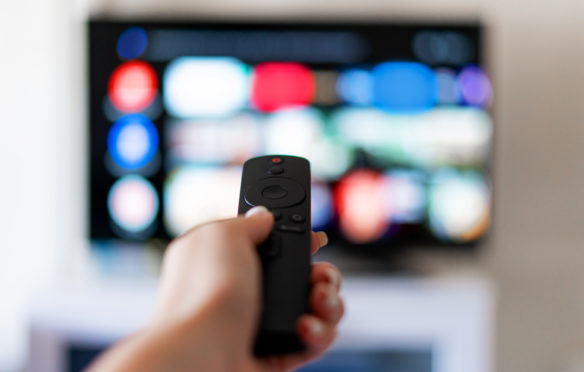
Adults could minimise their exposure to health risks associated with watching TV if they limit viewing time to two hours a day, new research suggests.
Researchers found the lowest overall health risks from diseases including cancers and cardiovascular disease are associated with viewing TV for two hours or fewer each day.
Further analysis estimated 6% of all deaths and 8% of cardiovascular deaths are attributable to time watching TV.
The study, led by the University of Glasgow, also found that potentially, if all participants limited TV time to two hours a day, 5.62% of all deaths and 7.97% of deaths due to cardiovascular disease could have been prevented or delayed.
The researchers examined lifestyle and demographic data from 490,966 UK Biobank participants aged 37-73 years who were recruited between 2006-2010.
Participants were followed up until 2016-2018 and their data was linked to national routine death and disease registries.
Dr Hamish Foster from the University of Glasgow’s Institute of Health and Wellbeing, who led the study, said: “This study adds more weight to the evidence that more time spent watching TV is likely to be detrimental to health.
“Our study suggests limiting TV time could delay or prevent a lot of adverse health.
“However, there is still more work to be done before we can make firm TV time recommendations.”
He added: “TV time is just one of a number of potentially sedentary behaviours, which also includes screen time watching videos on your phone, which may all contribute to adverse health outcomes.
“Also, there are many other contributory factors, such as unhealthy snacking and lower socioeconomic status, that are also strongly associated with both TV time and poor health outcomes.
“Further research is needed to understand all these factors and inform future advice and guidelines.”
To reduce the chance of the results being due to reverse causality – when poor health leads to increased TV time – participants with non-communicable disease, cardiovascular disease and cancer were excluded.
Further exclusions included all those who had an “adverse health event” within two years of recruitment.
The researchers also looked at the potential benefits of substituting TV time with healthier activities such as walking.
They found people who would benefit most from replacing longer periods of TV time with more time exercising are those who only spend very small amounts of their day doing those healthier activities.
Current physical activity guidelines in UK encourage 150 minutes of moderate physical activity or 75 minutes of vigorous activity a week.
Sedentary guidelines only suggest people limit the time they spend sitting, with no recommendations as to what might be a low risk amount of time to spend sitting watching TV each day.
The study, Understanding How Much TV is Too Much: A Non-linear Analysis of the Association Between Television Viewing Time and Adverse Health Outcomes, is published in Mayo Clinic Proceedings.

Enjoy the convenience of having The Sunday Post delivered as a digital ePaper straight to your smartphone, tablet or computer.
Subscribe for only £5.49 a month and enjoy all the benefits of the printed paper as a digital replica.
Subscribe